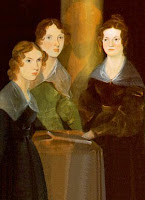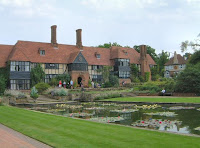When Amanda and I first discussed me writing today’s blog, I had suggested writing about some obscure 18th century music that had been recently discovered in the North East of England, but I also mentioned that I was going to Venice. Amanda kindly gave me a choice, and because Venice is Venice, you are getting Venice.
Because Carnival finished a few days before I arrived and the paving stones still were littered with confetti, I include a picture of the mannequin from the lobby of my hotel. The dress was absolutely stunning. Carnival of course died out in the early decades of the 20th century and was revived in 1979. Even the mask making had be re-learnt. It is possible to buy high-quality masks based on traditional designs, based on the Commedia dell’Arte. These are held in place either by ribbons or in the case of some traditional women’s masks, by clamping a little piece with your lips. When wearing a mask, women were expected to be silent. The Venetian tradition of mass gives rise to the masquerade balls.
More than any other city, Venice still evokes the spirit of the past. To travel to Venice is to step back into another world, primarily because there are no cars. Motorboats are strictly regulated and once you are in the back streets the main noise is silence or the sound of voices. Gondolas do ply their trade, but most people walk.
One of the main differences between today’s gondolas and the gondolas that Byron, Shelley, or a whole host of other Regency aristocrats would have taken is that the wooden shelter, or felze, is no longer used. It’s possible to see an early 19th century gondola in the courtyard of Ca’Rezzonico, one of the few palazzos on the Grand Canal open to the public, and dedicated to the 18th century. Its double story ballroom with its painted frescoes and magnificent chandeliers is highly evocative. But I was surprised to see how much trompe l’oeil was used rather than actual plaster!
Both of the famous cafes on St. Marks’s Plaza–Florian’s (1720) and Quadri’s (1775) has painted interiors but they only date from the 1850s. It is still possible at both cafes to get proper bittersweet hot chocolate. Personally, I preferred Quadri’s, but it was a close run thing. You are served a pot of hot chocolate, a jug of warm milk, and sugar. It is up to you to make the chocolate how you want it. My husband reported that the coffee was also very good. Quadri’s was known as the Austrian cafe during the occupation, and its upstairs restaurant has been serving meals since 1844.
So much of the 18th century is preserved because after Napoleon conquered the Venetian Republic in 1797, many Venetians lost their money. It was only through Canova’s efforts at the peace conference that many of Venice’s treasures, including the 4 horses, were returned. Some paintings were only returned in the 1970s, and the Louvre still holds a few. Unfortunately Austria did retain control of the city until 1866, when the citizens joined the new Kingdom of Italy.
Venice, because of its art, has always been an important stop on the Grand Tour. For example, most of Caneletto’s paintings were bought by Englishmen. This might have something to do with the British consul at the time, Joseph Smith, also being Caneletto’s agent. (As an aside for Diane, in 1717 Smith married one Catherine Tofts, who sang at Drury Lane and Haymarket before going to Venice in 1711). With its Carnival, its gaming houses (the Ridotto closed in 1774, but gaming continued in private houses, and today Venice has one of the few official casinos) and general atmosphere of frivolity because life is short, Venice exerted powerful influence on the men and women who visited it, and still does.
Michelle Styles’s latest UK release is Impoverished Miss, Convenient Wife, and is set in 1813 Northumberland. Vist her website here for more details!














